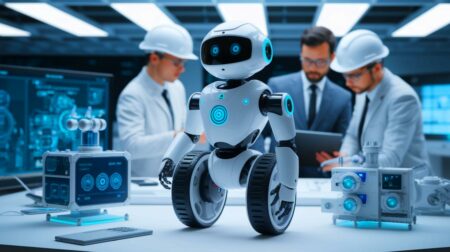| IN A NUTSHELL |
|
The world of robotics is evolving at a rapid pace, with humanoid robots capturing the imagination of both engineers and the general public. At the forefront of this technological evolution is Boston Dynamics, renowned for their revolutionary Atlas robot. In recent demonstrations, Atlas has been seen performing complex breakdance moves, highlighting the incredible advancements in humanoid mobility. While these feats of agility and grace are fascinating, they also raise questions about the practical applications of such technology in everyday life. This article delves into the current state of humanoid robots, their potential impact on society, and the ongoing race among global tech companies to develop the most advanced robots.
The Pioneers of Humanoid Robotics
Boston Dynamics has long been a leader in the field of humanoid robotics. Their Atlas robot is a testament to their commitment to pushing the boundaries of what robots can achieve. The latest videos showing Atlas performing complex dance moves illustrate not only the technological prowess of Boston Dynamics but also the potential for robots to move with human-like agility. While other companies like Tesla and Agility Robotics focus on practical applications, Boston Dynamics continues to explore what is possible in terms of movement and coordination.
Chinese companies, such as Unitree, are also making significant strides in the field. Unitree’s G1 humanoid robot, for example, is priced at a competitive $16,000 and is capable of performing side flips and dancing alongside humans. These developments are not just for entertainment; they represent a significant step forward in the integration of robots into human environments. As these machines continue to evolve, their capabilities will likely expand beyond entertainment and into more practical applications.
The Practical Applications of Humanoid Robots
While the athletic feats of robots like Atlas are impressive, the real impact of humanoid robotics lies in their practical applications. Companies such as Tesla and Sanctuary are focusing on developing robots that can effectively perform tasks that are mundane but essential in various industries. These robots are designed to pick up objects, manipulate them, and place them exactly where needed, effectively automating tasks that humans currently perform.
This focus on practical applications is where the true potential for change lies. As robots become more adept at handling tasks in fields like logistics, manufacturing, and even healthcare, we could see a significant shift in how these industries operate. The implications for labor markets are profound, as robots might take over repetitive and dangerous tasks, potentially freeing humans to focus on more complex and creative endeavors.
Robots as Entertainers and Companions
Aside from their practical uses, humanoid robots are also being developed as entertainers and companions. The ability of robots like the Atlas and Unitree’s G1 to perform dance routines is more than just a technical showcase; it’s a glimpse into how robots might be integrated into our daily lives as companions or even performers. As these machines continue to develop more lifelike movement and interaction capabilities, they could become an integral part of households, providing companionship and even emotional support.
This integration raises ethical and social questions about the role of robots in human life. As AI-driven machines become more sophisticated, the line between human and machine interaction will blur. This could pave the way for robots to become a significant part of our social fabric, participating in activities ranging from entertainment to therapy.
The Future of Humanoid Robotics
The future of humanoid robotics is both exciting and unpredictable. As companies around the world continue to innovate, we are likely to see robots becoming more autonomous and integrated into various aspects of daily life. The advancements in AI and robotics technology will enable these machines to perform increasingly complex tasks, potentially transforming industries and societal norms.
However, the journey to this future is fraught with challenges. From ethical concerns about the role of robots in human life to the technical hurdles of creating machines that can truly mimic human behavior, the path forward will require careful consideration and collaboration across multiple fields. As we stand on the brink of this new era, one cannot help but wonder: how will humanoid robots redefine our understanding of work, companionship, and even humanity itself?
As we continue to marvel at the capabilities of humanoid robots, the question remains: how will society adapt to the presence of these intelligent machines, and what role will they ultimately play in our future?
Did you like it? 4.5/5 (28)








Wow, Atlas can dance better than me! 😂
Impressive moves, but are these robots practical for everyday use or just for show?
What next? Robots participating in “Dancing with the Stars”? 🕺🤖
Hope they don’t take over the dance floor at weddings! 😅
Can Atlas help around the house, or is it just a fancy dancer?
Skynet vibes, anyone? 🤔
But can it do the Kangaroo?